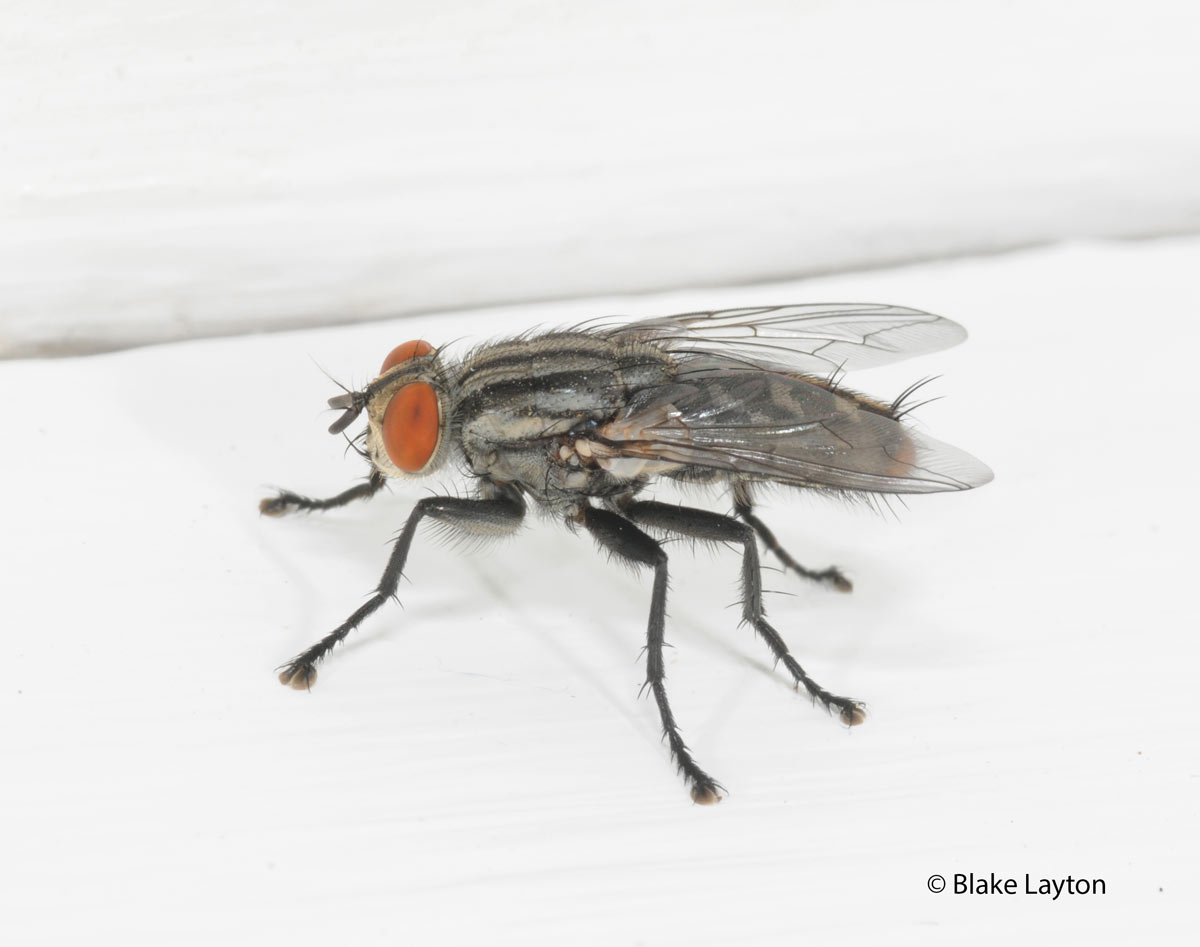Red-tailed Flesh Fly, Vol. 8, No. 5
Related News
June 24, 2013
June 20, 2013
April 11, 2013
April 2, 2013

“We’ve got these big gray flies in the house, and we don’t know how they are getting in. They have been flying around for several days now and they are getting irritating. These things are big, much larger than house flies, and have big red eyes.”
Flesh flies are a large group of flies whose larvae feed on decaying organic matter, such as animal carcasses, feces, and decaying plant material, or that are parasites of other insects. Red-tailed flesh flies are named for that large red bump on their rear, which also explains the species name, haemorrhoidalis. Though more plentiful during warmer months, red-tailed flesh flies are active throughout the year here in the South and the females are very good at locating food sources on which to deposit their larvae (These flies don’t lay eggs. The eggs hatch inside the female and she deposits live maggots.) This may be the carcass of a larger animal, such as a dog or cow, the carcass of a small animal, such as a rat, mouse, or bird, or an accumulation of animal feces or decaying plant material.
Infestations in homes or commercial businesses, like the one described above, are usually associated with some small animal carcass that died in an attic or wall void. The female fly that deposited her larvae there usually goes unseen, and it is not until the larvae complete their development and a few dozen adult flies emerge that the problem is noticed. By this time the carcass of whatever small animal these larvae developed in may have been depleted and beginning to dry up. In many cases, the benefit these flies provide by breaking down small animal carcasses and hastening the decline of the odor problem may outweigh the nuisance they cause.
“Well, that makes sense! We had been smelling a dead rat in the back bedroom and bath, but the odor is gone now, and we only swatted two flies yesterday and none so far today.”
Control: The good news is that by the time one has been seeing flesh flies for several days, the infestation may be winding down. Usually, these are flies that have completed their development and emerged from whatever the food source was, often depleting it in the process. If these flies are unable to find another suitable food source on which to deposit their larvae, the problem will go away when these adults die out. Of course, it helps to use a fly swatter to hasten this process. It is also a good idea to look for possible breeding sources and eliminate any that are found. If the flies continue to have access to new food sources, such as more dead rodents, more pet fecal deposits, or a continued source of decaying plant material, the problem will continue until the source is identified and eliminated.
ee pages 37 - 40 of Extension Publication 2443, Control Household Insect Pests for more information on the identification and control of large flies in indoor settings.
Blake Layton, Extension Entomology Specialist, Mississippi State University Extension Service.
The information given here is for educational purposes only. Always read and follow current label directions. Specific commercial products are mentioned as examples only and reference to specific products or trade names is made with the understanding that no discrimination is intended to other products that may also be suitable and appropriately labeled.
Mississippi State University is an equal opportunity institution.
Bug’s Eye View is now on Facebook. Join the Bug's Eye View Facebook group here.